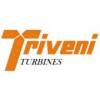Filter interviews by
Bharat Bijlee Assistant Manager Design Interview Questions and Answers
Bharat Bijlee Assistant Manager Design Interview Experiences
1 interview found
I applied via LinkedIn and was interviewed in Apr 2024. There were 2 interview rounds.
(1 Question)
- Q1. About past experience About yourself Basics of engineering Counter question according to your answers
(1 Question)
- Q1. Salary expectation
- Ans.
I expect a competitive salary that reflects my skills, experience, and the industry standards for this role.
Based on my research, the average salary for an Assistant Manager Design in this region is between $60,000 and $80,000.
Considering my 5 years of experience in design management and successful project completions, I believe a salary in the upper range is justified.
I am open to discussing a comprehensive compensati...
Top trending discussions






Interview questions from similar companies

Assistant Manager Interview Questions & Answers
CG Power and Industrial Solutionsposted on 5 Mar 2019
I applied via Approached by Company and was interviewed before Mar 2018. There was 1 interview round.
Interview Preparation Tips
Skills: Communication, Body Language, Decision Making Skills
Duration: >3 Months

I applied via Referral and was interviewed before Mar 2021. There were 2 interview rounds.

(6 Questions)
- Q1. What is your family background?
- Q2. What are your salary expectations?
- Q3. Why should we hire you?
- Q4. Why are you looking for a change?
- Q5. What are your strengths and weaknesses?
- Q6. Tell me about yourself.
Interview Preparation Tips
Iam working in fan division there was a heavy pressure,
Stock always not available

I applied via Recruitment Consultant and was interviewed before Mar 2020. There were 3 interview rounds.
Interview Questionnaire
1 Question
- Q1. Questions were based on past work experience
Interview Preparation Tips

I applied via Referral and was interviewed before Aug 2020. There were 3 interview rounds.
Interview Questionnaire
3 Questions
- Q1. Tell me Brief about your current role
- Ans.
I am currently working as a Team Lead in a retail store, responsible for managing daily operations and supervising staff.
Manage and oversee the store's daily operations
Supervise and train staff members
Ensure excellent customer service
Monitor inventory levels and order supplies
Handle customer complaints and resolve issues
Create work schedules and assign tasks
Conduct performance evaluations
Collaborate with other departme...
- Q2. What is your Contribution to company
- Ans.
I have contributed to the company by implementing efficient processes, improving team performance, and driving revenue growth.
Implemented a new inventory management system that reduced stockouts by 50%
Developed and executed a training program that improved employee productivity by 20%
Introduced a customer loyalty program that increased repeat sales by 30%
Led a cross-functional team to successfully launch a new product ...
- Q3. Achievements
Interview Preparation Tips
Go through your basic job Role.
Your Answers should be Crystal Clear.

(1 Question)
- Q1. Are you satisfied with management view on cost cutting?
- Ans.
I am satisfied with management's view on cost cutting as they have implemented effective strategies to reduce expenses without compromising quality.
Management has successfully implemented cost cutting measures without affecting the quality of products or services
They have involved employees in the cost cutting process to gather valuable insights and suggestions
Management regularly reviews and adjusts cost cutting strat...
Interview Preparation Tips

I applied via Campus Placement and was interviewed before Jan 2021. There was 1 interview round.
Interview Questionnaire
1 Question
- Q1. Managememt trainee sales /marketing
Interview Preparation Tips

I applied via Walk-in and was interviewed in Jul 2021. There were 2 interview rounds.

(1 Question)
- Q1. Only about your subjects and market knowledge?
Interview Preparation Tips

I applied via Referral and was interviewed before Aug 2023. There was 1 interview round.
(2 Questions)
- Q1. Basic details of previous organisation JD
- Q2. Details for the JD and achievements

I applied via Recruitment Consulltant and was interviewed in Aug 2023. There were 3 interview rounds.
Working profile and personal interview
Ask area coverage and how much retailer catter.
(1 Question)
- Q1. Discuss about package and required package.
- Ans.
Understanding package and required package is crucial for effective project management and resource allocation.
A package is a collection of related modules or components, e.g., a software library.
Required packages are dependencies needed for a project to function, e.g., 'numpy' for Python data analysis.
In project management, a package can refer to a set of deliverables, like a software release.
Identifying required pack...
Interview Preparation Tips
Bharat Bijlee Interview FAQs
Tell us how to improve this page.
Bharat Bijlee Interviews By Designations
- Bharat Bijlee Assistant Manager Interview Questions
- Bharat Bijlee Customer Service Manager Interview Questions
- Bharat Bijlee Assistant Sales Manager Interview Questions
- Bharat Bijlee SAP Abap Consultant Interview Questions
- Bharat Bijlee Industrial Engineer Interview Questions
- Bharat Bijlee Manager Interview Questions
- Bharat Bijlee Graduate Apprentice Trainee Interview Questions
- Bharat Bijlee Assistant Manager Design Interview Questions
- Show more
Overall Interview Experience Rating
based on 1 interview experience
Difficulty level
Duration
Interview Questions from Similar Companies
Bharat Bijlee Assistant Manager Design Reviews and Ratings
based on 1 review
Rating in categories
|
Assistant Manager
90
salaries
| ₹4.5 L/yr - ₹10 L/yr |
|
Deputy Manager
59
salaries
| ₹6.1 L/yr - ₹11 L/yr |
|
Sales Manager
50
salaries
| ₹10.5 L/yr - ₹17.5 L/yr |
|
Manager
38
salaries
| ₹8.6 L/yr - ₹14.3 L/yr |
|
Senior Executive
31
salaries
| ₹4 L/yr - ₹6.8 L/yr |

Havells

CG Power and Industrial Solutions

KEI Industries

RR kabel
- Home >
- Interviews >
- Bharat Bijlee Interview Questions













